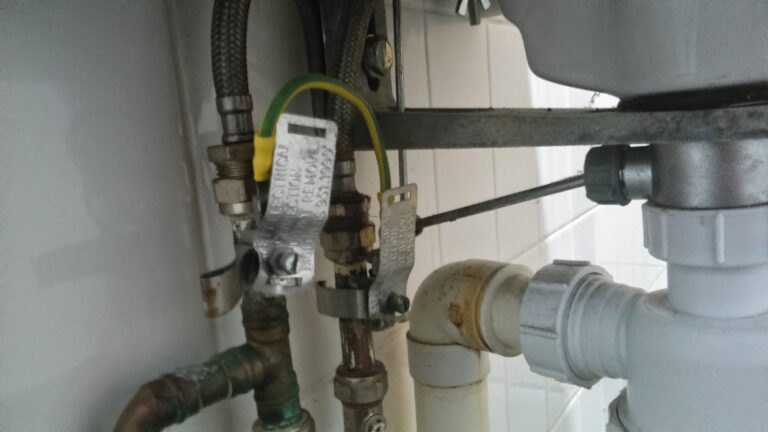Introduction
The essence of life is water. Civilizations grew when there was water available, such as on the riverbank. Water is required in daily life to complete a number of home tasks. Water service, including water system & drainage, is now necessary for building a home.
Residential plumbing systems are used to provide water services in homes. It is a complex and expensive system to construct & repair. This provides a concise overview of the home plumbing system, which is very helpful in understanding its design, function, and upkeep.
A complicated network of pipes, including hot and cold water supply lines, fixtures, appliances, drainage systems, traps, vent pipes, storage tanks, etc., make up the home plumbing system. Whether inside the buildings or on the walls, it runs covertly.
Goals of a Good Plumbing System Include:
- Providing appropriate potable water supplies (safe drinking water) at the proper pressure and volume.
- Check for leaks to ensure there are none or as little water loss as possible.
- Water supply and wastewater must never be combined.
- Effectively collecting and disposing of household wastewater.
- Preventing the admission of harmful gases into the house and facilitating their simple egress.
- The drain pipe from home should slope downhill, with a minimal inclination of 1/4 inch per foot (20 mm per 1 meter) and a maximal slope of 3 inches per foot (80 mm per 1 meter), towards sewage lines or a septic system.
- The availability of maintenance holes for drain pipe cleaning.
- Plumbing equipment, components, and craftsmanship must meet quality standards.
- The water supply system (water supply into a home), Fixtures and Appliances, and Residential Plumbing System are the three essential components.
- Drainage systems (should use (waste) water collection and discharge).
Read More: All You Need To Know About Material, Types, And Cost Of Patio Cover
Residential plumbing system operation
System for supplying water
- The municipality, a private water corporation, or a private subsurface bore well provides potable water.
- The main supply pipe allows this water to enter a home (aka mains). Either a straight water supply system or an indirect system of water supply provides water to a home. Yet if the supply is continuous or intermittent will affect how the water supply network is designed.
A home’s water outlets receive fresh water from the mains through a direct water supply system. Every faucet has access to potable water. It is conceivable if the water source provides water at a high water pressure that is sufficient to supply water at a sufficient pressure at all faucets, 24 hours a day (taps).
System for indirect water supply
Tanks for storage receive water from the mains. After that, a water storage tank delivers water to the home. This method is used in situations when there is intermittent mains water supply. It is also utilized when the mains water pressure is insufficient to deliver water at all valves with an appropriate amount of pressure.
- 2 separate lines are formed from the main supply route (down take pipe in the case of an indirect water delivery system). The other branch line provides cold water, while one branch line supplies water to water heaters.
- The hot water line from the water heater is equal to the cold water line. Both lines supply water to lighting fixtures throughout the house.
- As a result, it mainly comprises a system of pipes for the transportation and distribution of water.
- Water pumping & underground and overhead storage tanks also require careful study.
- To distribute water at a consistent and sufficient pressure, booster pumps are occasionally built.
Fixtures
Laundry tubs, basins, bathtubs, and showers (toilets and exterior sillcocks (bibs)) only need a cold water line.
- Appliances include washers, dryers, dishwashers, and softeners.
- Water is required for all fixtures and fittings at a specific water pressure of the fluid flow. It is recommended that the pressure at fixtures and fittings be between 1.2kg/cm2 (12m head) and 5kg/cm2 (50m head). Fixture height should be carefully chosen to ensure sufficient water pressure.
- Faucets (taps) and valves control the water exit at fixtures and fittings.
- There are advanced faucets available today that require a low amount of basic pressure but for which sound hydraulic structures are essential.
Disposal of Waste Water or Drainage
After that, the used water enters the drainage system (wastewater system).
- Used water initially passes via drain traps before entering drainage pipes.
- It is a U-shaped pipe or a trap. It collects standing water and keeps bad sewer gases from flowing into the room.
- The entire drainage system relies on gravity. All of the sewage travels downward through a network of pipes with a wide diameter.
- A network of vent pipes is connected to the drainage pipes.
- Vent pipe: Open from the top, vent pipes force treated wastewater to flow downward by introducing fresh air into the drainage system. These pipes leave home from the rooftop.
- All waste finally makes its way to the main sewerage line, which departs the home and is linked to either the municipal sewage line or. In the absence of a sewer line, to the septic tank or cesspit.
- The inverted levels of inspection chambers or road maintenance holes are crucial for a drainage system’s gravity flow. In addition to those mentioned above, modern homes include fire prevention and drainage systems.
Conclusion
In a nutshell, this is how your home’s plumbing system works. Even though it is much more complicated than this, knowing these fundamentals should help you better grasp how your plumbing functions or where a potential issue might be. If you have any questions about plumbing, would like to have plumbing repairs performed, or if you are having trouble and need assistance from an expert.
FAQ’s
Apart from this, if you are interested to know more about What Is Sub Soil Drainage? then visit our FEATURED category.
